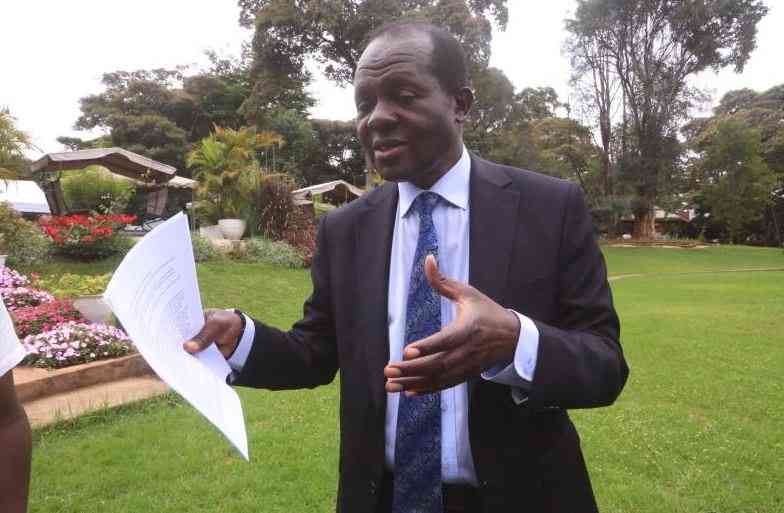
NAIROBI: Leaves from a local shrub-commonly found by the roadsides can help boost soil fertility, research from the World Agroforestry Centre (ICRAF) indicates.
Researchers at the centre have demonstrated that leaves and stems of a local shrub - Tithonia diversifolia - when incorporated with a rock phosphate common in Western Kenya can improve food production and reduce over-reliance on commercial fertilisers.
Green leaf biomass of tithonia is high in nutrients, averaging about 3.5 per cent nitrogen (N), 0.37 per cent phosphorus (P) and 4.1 per cent potassium (K) on a dry matter basis.
Boundary hedges of sole tithonia can produce about 1kg biomass - tender stems and leaves - yearly. Most farmers using this soil enriching method in Western have grown the shrub as live fences or on plot boundaries.
The materials decompose rapidly after application to soil, and the incorporated biomass can be an effective source of N, P and K for crops.
Maize yields were even higher with incorporation of tithonia biomass than with commercial mineral fertiliser at equivalent rates of N, P and K. Use of the shrub has also increased the beneficial bacteria populations in the soil such as those that fix nitrogen.
The use of tithonia has been recommended for farmers growing profitable-fast growing crops like cabbages and kales.
Green biomass of tithonia has been recognised as an effective source of nutrients for lowland rice (Oryza sativa) in Asia and more recently for maize (Zea mays) and vegetables in eastern and southern Africa.
The researchers believe that this agroforestry system will not only increase maize yields and provide greater food security, the increased growth of trees will improve drought resilience and build carbon sequestration - thereby contributing to climate change adaptation.
Tithonia is one of the fertiliser trees that have increasingly shown potential of boosting soil fertility-reducing over-reliance on commercial fertilisers.
Similar work by ICRAF in Malawi and Zambia has identified other tree species that can replace artificial fertiliser with promising returns.
They provide viable cost-effective alternatives to smallholder farmers in Kenya and across Africa.
Over a ten-year experiment in Malawi using fertiliser trees, such as Tephrosia vogelii and Gliricidia sepium, maize yields have averaged 3.7 tonnes per hectare compared to 1 tonne per hectare in plots without fertiliser trees or mineral fertiliser.
The researchers add that the strength of the Malawi maize-agroforestry system is the enormous increase in nitrogen-rich organic matter going into the soil combined with the potential of the tree legumes to suppress weed growth and weed populations.
The researchers have calculated that if half a million farmers - each with 0.2 hectares - were to plant fertiliser trees, the amount of nitrogen biomass they would fix in a year would be equivalent to 200kg per hectare.
To buy this amount of mineral fertiliser would cost around $5.8 million (Sh580 million) annually - which is the saving by farmers.
Stay informed. Subscribe to our newsletter
The main disadvantage is that more labour is needed in establishing, maintaining, and pruning back the leaves and other biomass of the inter-cropped leguminous trees compared to conventional maize production.
Research with Faidherbia albida in Zambia over several years has shown that mature trees can sustain maize yields of 4 tonnes per hectare.
The Faidherbia tree remains leafless during the growing season so it does not compete with maize. The leaves re-grow during the dry season and they maintain needed land cover.
Over the years, crop yields have remained stagnant in Africa, closely linked to declining soil fertility and degraded land.
Addition of mineral fertilisers cannot be sustained in the long term as it is environmentally unfriendly.
Use of fertiliser trees is expected to shore up the fortunes of smallholder farmers in Kenya and the developing world.
 The Standard Group Plc is a
multi-media organization with investments in media platforms spanning newspaper
print operations, television, radio broadcasting, digital and online services. The
Standard Group is recognized as a leading multi-media house in Kenya with a key
influence in matters of national and international interest.
The Standard Group Plc is a
multi-media organization with investments in media platforms spanning newspaper
print operations, television, radio broadcasting, digital and online services. The
Standard Group is recognized as a leading multi-media house in Kenya with a key
influence in matters of national and international interest.
 The Standard Group Plc is a
multi-media organization with investments in media platforms spanning newspaper
print operations, television, radio broadcasting, digital and online services. The
Standard Group is recognized as a leading multi-media house in Kenya with a key
influence in matters of national and international interest.
The Standard Group Plc is a
multi-media organization with investments in media platforms spanning newspaper
print operations, television, radio broadcasting, digital and online services. The
Standard Group is recognized as a leading multi-media house in Kenya with a key
influence in matters of national and international interest.






